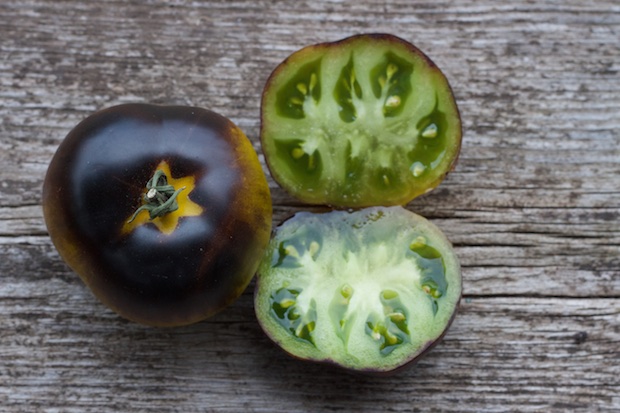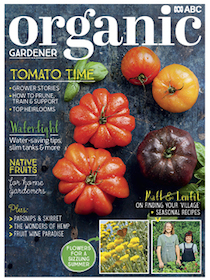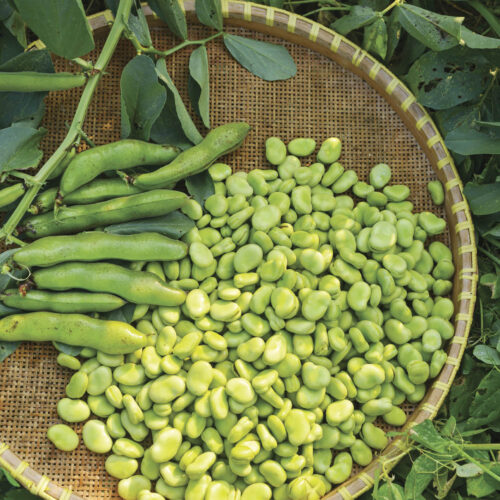Great times for tomatoes
2018-10-17T13:00:01+11:00
Penny Woodward introduces some unusual, and delicious, heirlooms to try.
Tomatoes are perhaps the most popular edible plants to grow and we home gardeners are always hungry for more information and varieties to try.
So why not write a book about them?! OG horticultural editor Penny Woodward has done just that, teaming up with our regular contributor Karen Sutherland and food writer Janice Sutton to produce Tomato: know, sow, grow, feast
It is a 370-page hardcover tome with an immense amount of information and inspiration on growing, knowing and cooking with tomatoes.
This issue we’ve sampled from the book: Penny profiles some not so well-known heirlooms that are bursting back into favour – or should that be flavour?
“Here is a short selection of heirlooms for different climates and situations. Also, five profiles of some of my favourites. Our book contains a full A–Z list of over 220 profiles,” writes Penny.
Quick picks
Good for dry heat
Amish Paste, Beams Yellow Pear, Black From Tula, Santorini, Wild Sweetie.
Good for humid heat
Blue Ridge Mountain, Eva Purple Ball, Grosse Lisse, Thai Pink Egg, Tropic.
Good for cold and short seasons
Kotlas, Lemon Drop, Moskovich, Nyagous, Stupice.
Good disease resistance
Break O’ Day, Early Cascade, Hillbilly, Red and Black, Yellow Roma.
Good for small spaces and pots
Banksia Queen, Burnley Gem, Mamma Mia, Olomovic, Tatura Dwarf Globe.
Penny’s favourites, however, are:
Aunt Ruby’s German Green
Type: Indeterminate, regular leaf. Description: Large (to over 500g), yellow-and-olive green beefsteak of variable shape.
Use: Salad, slicing, bottling, salsa.
Flavour: Sweet, succulent, fruity, spicy. Notes: 70–90 days, mid- to late season. Best eaten before it becomes too yellow. Medium yields.
History: German heirloom. Handed down to Ruby Arnold in Tennessee from her German immigrant grandfather. US Slow Food, Ark of Taste tomato introduced
to Australia in 2012 by Royal Tasmanian Botanic Gardens (RTBG).
Big Rainbow (Rainbow)
Type: Indeterminate, regular leaf.
Description: Large (to 500g), bright orange/yellow beefsteak with juicy, yellow flesh suffused with red from the base. Each slice is red, pink, orange and yellow. Few seeds.
Use: Salad, slicing, sauce, salsa.
Flavour: Excellent, fruity, almost melon.
Notes: 85–100 days, late season.
History: American heirloom. Named by Dorothy Beiswenger of Minnesota in 1983. Brought to Australia by Diggers in 1997.
Cherokee Purple (Purple Cherokee)
Type: Indeterminate, regular leaf.
Description: Deep dusky rose fruit with green/mahogany shoulders and deep red/pink flesh.
Use: Salad, slicing, bottling, sauce.
Flavour: Smoky, complex, pleasantly sweet, rich.
Notes: 70–80 days, mid-season. Fruit is thin-skinned,
so it doesn’t store well. Eat or use straight from the bush. History: American heirloom. Listed in the US Seed Savers Exchange in the 1990s. Obtained from a family who had been growing a tomato given to them by Cherokee people over 100 years ago.
Eva Purple Ball
Type: Indeterminate, regular leaf.
Description: Medium, round, pinkish red fruit with purple overtones and juicy, pink flesh.
Use: Salad, slicing, sauce, salsa.
Flavour: Excellent, sweet, rich.
Notes: 75–85 days, late season. Does well in hot and humid regions. Peels easily. Resistant to diseases.
History: German heirloom. Taken by the Bratka family from the Black Forest to the USA during the late 1800s.
Wild Sweetie (Wild Currant) Solanum pimpinellifolium
Type: Indeterminate, regular but fine leaf.
Description: Tiny, currant-sized, bright red tomato.
Fruits grow in long trusses.
Use: Salad, bottling, salsa, preserves.
Flavour: Intense, rich, sweet, strong, tangy.
Notes: 70–85 days, mid-season. Wide-spreading vine. Resistant to wilt, blight diseases and bacterial canker. History: Wild South American species, specifically found in Ecuador and Peru. Naturalised in other countries. Still used as a cross to produce new tomato varieties.
For more on growing tomatoes and heirloom varieties, get your copy of Issue 105 Organic Gardener magazine, OUT NOW!







